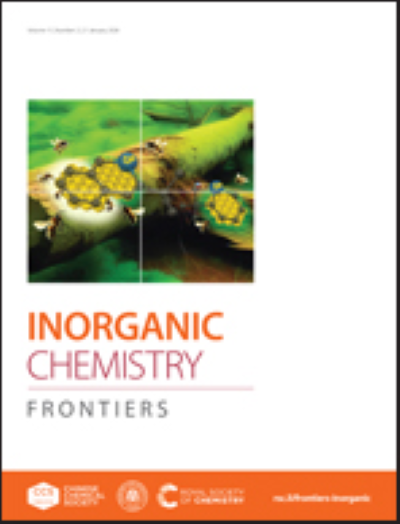Design of an Inflorescence-Type Phosphorus-doped (Ni,Co)–Molybdate Architecture with an Atomically Thin Cobalt Oxide Layer for High-Efficiency Energy Storage Systems
IF 6.1
1区 化学
Q1 CHEMISTRY, INORGANIC & NUCLEAR
引用次数: 0
Abstract
High-performance asymmetric supercapacitors (ASCs) need to promote the diffusion of the electrolyte into the electrode, a process that is governed by the electron transfer kinetics and morphology of the electrode material. In line with this, the present study designed a phosphorus (P)-doped (Ni,Co)-MoO4 electrode with an inflorescence-like architecture on a central stem and an atomically thin coating of Co3O4 to improve the electron conductivity of the resulting electrode. This unique structure was prepared using a three-step process that included hydrothermal processing, phosphorylation, and the atomic layer deposition of Co3O4. The presence of P in (Ni,Co)-MoO4 caused the Mo to shift to a lower oxidation state, which improved the surface redox behavior of the material. Additionally, the formation of Ni2P and CoP3 nanoparticles on the surface of inflorescence architecture via nanoscale Kirkendall effect boosts the charge storage behavior in the electrode system. As a result, the optimized P-doped (Ni,Co)-MoO4 electrode with a 7 nm layer of Co3O4 (NCMP-7Co) achieved a high specific capacity of 2374 C/g at a current density of 2 A/g with 79.8% capacity retention after 5000 cycles at 10 A/g current density. The mechanism for the optimized electrode based on electrochemical analysis indicates a dominant diffusion-governed behavior. On the other hand, postmortem analysis revealed diffusion of P and Mo from the electrode material with significant structural change. An ASC constructed device with reduced graphene oxide displays fairly high energy density compared to reported systems. Convincingly, a synergistic improvement with outstanding performance could be owed to the inflorescence flower-like architecture, compositional arrangement after P-doping, and deposition of the Co3O4 atomic layer.为高效储能系统设计带有原子级氧化钴薄层的花序型掺磷(Ni,Co)钼酸盐结构
高性能非对称超级电容器(ASCs)需要促进电解质向电极的扩散,这一过程受电子转移动力学和电极材料形态的控制。基于此,本研究设计了一种磷(P)掺杂(Ni,Co)-MoO4电极,该电极在中心茎上具有花序状结构,并具有原子薄的Co3O4涂层,以提高电极的电子导电性。这种独特的结构是通过水热处理、磷酸化和Co3O4原子层沉积三步工艺制备的。P在(Ni,Co)-MoO4中的存在使Mo向较低的氧化态转移,从而改善了材料的表面氧化还原行为。此外,通过纳米级Kirkendall效应在花序结构表面形成Ni2P和CoP3纳米粒子,增强了电极系统中的电荷存储行为。结果表明,优化后的7 nm Co3O4 (ncp - 7co)层p掺杂(Ni,Co)-MoO4电极在2 a /g电流密度下具有2374 C/g的高比容量,在10 a /g电流密度下循环5000次后容量保持率为79.8%。基于电化学分析的优化电极的机制表明主要是扩散控制行为。另一方面,解剖分析显示P和Mo从电极材料中扩散,结构发生了显著变化。与已报道的系统相比,还原氧化石墨烯的ASC构造器件显示出相当高的能量密度。令人信服的是,具有优异性能的协同改进可能归功于花序的花状结构,p掺杂后的成分排列以及Co3O4原子层的沉积。
本文章由计算机程序翻译,如有差异,请以英文原文为准。
求助全文
约1分钟内获得全文
求助全文
来源期刊

Inorganic Chemistry Frontiers
CHEMISTRY, INORGANIC & NUCLEAR-
CiteScore
10.40
自引率
7.10%
发文量
587
审稿时长
1.2 months
期刊介绍:
The international, high quality journal for interdisciplinary research between inorganic chemistry and related subjects
 求助内容:
求助内容: 应助结果提醒方式:
应助结果提醒方式:


